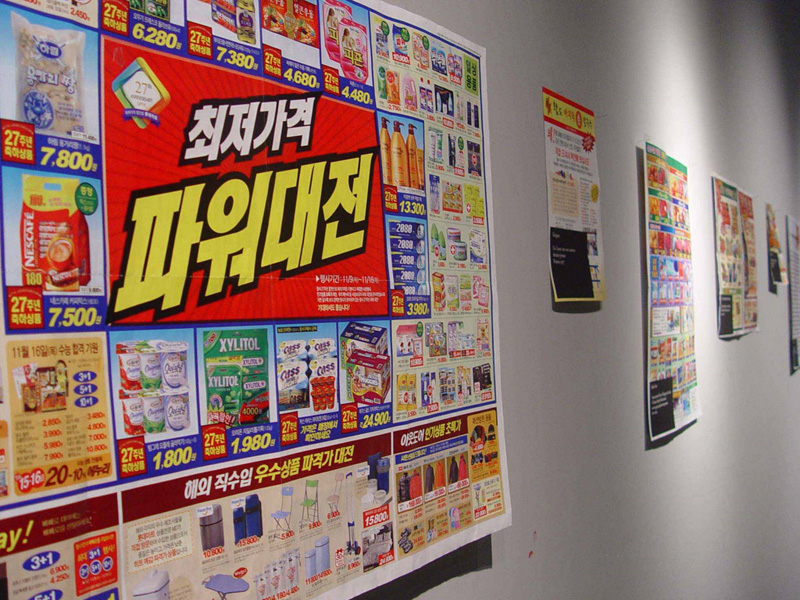



History Lesson: The Poster Is Dead, Long Live the Poster
- 2006
- digital-printed labels on found flyers
- 30 parts, various sizes
Our piece is intended as an irreverent homage to the great poster culture of the last century, and a reflection on the visual milieu of twenty-first century Korea. Like many others, we learned a lot about graphic design and its history from books. And the books were usually heavy with the “heroic” examples of designer posters from twentieth-century Europe and Americas. Some of the examples have become so familiar that we can almost draw them by memory – although we’ve never seen the actual pieces. Most of our all-time design heroes (Tschichold, Gerstner, Crouwel, Van Toorn) were also great poster designers.
This is sad. For now it’s very clear to us that we won’t be able to create posters of such singular visions, such ambitions, such relevancy. The market, if not the world, doesn’t seem to need them anymore. In place of posters, we see billboards, banners, flyers, and stickers, all struggling to sell the same stuff. And the diversification of medium hasn’t necessarily entailed the diversity of views.
But maybe we’re romanticizing the Great Posters of the Twentieth Century. Maybe we’re somehow programmed to see them with such awe. Maybe we’re not critical enough about their creators, or rather, how they have become such “statues” – mostly white, male statues. Maybe this hero-worshiping (a-)historical (un)consciousness is bad for keeping a clear eye on our contemporary conditions.
So this time we’re summoning the courage to praise our heroes in a way that would horrify them. We’re confronting them with a bit of contemporary reality by juxtaposing the names we admire with flyers we see everywhere in Korea. [On a flyer for the “Q Chauffeur Service,“ for example, a label is placed with the caption: “H. N. Werkman / De Rekenmachine / theatre poster / The Netherlands 1933.”] Stripped of their original purposes, the works cited are safely dead in museums, libraries, and private collections. Yet their specters are still haunting us. Our piece, then, is an amulet to exorcize them.
- Project type:
- ambiguous
- Commissioner:
- IGDB Ningbo